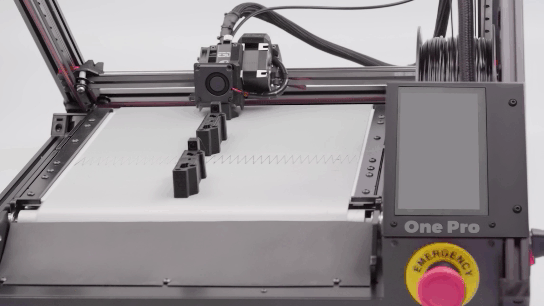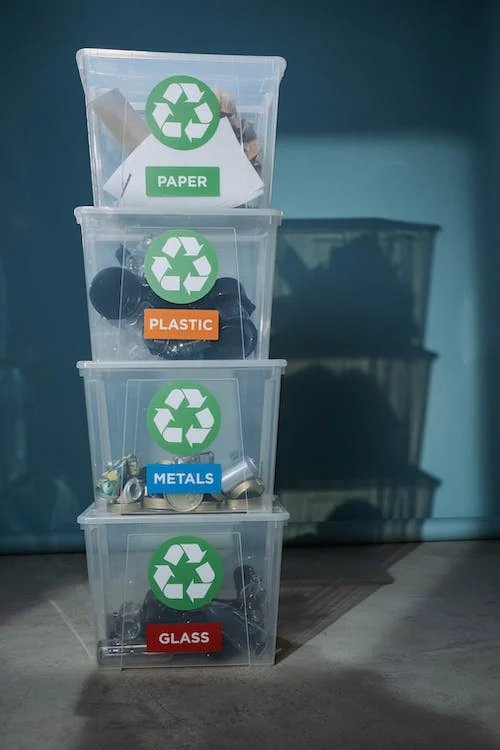The issue of sustainability has become an increasingly important aspect of industrial production in recent years. As the world struggles with the challenges of climate change and resource scarcity, innovative solutions are needed to minimize environmental impact. One of these promising solutions is additive manufacturing, commonly known as 3D printing. 3D printing has the potential to revolutionize the manufacturing landscape by offering unprecedented benefits in terms of sustainability, waste reduction and increased efficiency. In particular, 3D conveyor belt printing, which is instrumental in automating and thus validating AM as a full-fledged manufacturing medium, is a promising innovation in the field. In this blog post, we will dive into the world of additive manufacturing and explore how 3D belt printers, in particular, are paving the way for a greener and more sustainable future.
Unleashing the power of additive manufacturing
Additive manufacturing is a transformative manufacturing process that produces three-dimensional objects by layering materials based on a digital design. Unlike traditional subtractive manufacturing, in which materials are cut away or abraded to create the desired shape, additive manufacturing builds objects layer by layer. This controlled addition of material results in minimal waste creation. By using this cutting-edge technology, manufacturers can produce complex components and products more efficiently and sustainably, eliminating many of the limitations associated with traditional manufacturing methods. To date, however, 3D printing represents only a microscopic portion of the overall manufacturing world. Of the global manufacturing volume, it accounted for just 0.047%* as of 2019. And even though the trend has since moved further toward additive manufacturing, 3D printing continues to lack the effective resonance that its potential would actually demand.
The rise of the 3D belt printers
3D belt printing may represent a turning point in sustainable industrial production. In this 3D printing process, material is continuously deposited along a tensioned band, allowing for the seamless production of large-scale objects without complex assembly or post-processing. The direct application of material eliminates waste, just as with conventional FFF (fused filament fabrication) processes. In addition, the adapted printing angle naturally leads to less need for so-called support structures being additionally printed. These otherwise contribute to the stability of the object while in manufacturing process. With Cartesian printers, material is applied at a 90° angle, i.e. from above. Thus, overhangs and complex shapes are only possible if a corresponding base is printed along, which later gets removed. Although the additional material is usually applied very thinly, it is still an expense and leads to waste. Likewise, the printing process takes longer if additional geometries are produced.
Sharp angle for cutting-edge results
The belt printer applies material at a more acute angle, making it easier for the material to adhere to each other, which also makes it possible to print completely hollow, among other things. By saving support material, the 3D conveyor belt printer also effectively saves printing time. This gives it another advantage over conventional manufacturing methods, making it a compelling solution for industries that want sustainability but don’t want to cut efficiency.
In addition to the savings in time and materials, the 3D belt printer also boasts presentable energy efficiency. That’s because additive manufacturing, including 3D belt printing, is inherently more energy efficient than traditional manufacturing processes. By eliminating the need for costly tooling and machining, energy consumption and carbon emissions are reduced, contributing to a greener production cycle.
Supply chain optimization
Additive manufacturing is also a popular choice for local production. With this versatile machinery, diverse structures can be implemented, which can be combined for final products and prototypes. For specialized components, a suitable supplier is conventionally chosen to contribute the required parts. For larger objects, this can often involve 2-3 digit numbers, where material for a product is delivered from various locations around the world. Of course, this means CO2 pollution due to long and many transport routes, no matter how precisely logistics is planned nowadays. Especially for smaller product lines, it is worthwhile to use one or more 3D printers to avoid some transport routes and also associated costs.
A 3D belt printer is particularly suitable for manufacturing closer to the point of use, minimizing logistical complexity and environmental impact. Thereby, print jobs can be started promptly before production begins. Even for larger quantities, a 3D belt printer delivers the desired objects quickly and, most importantly, automatically. The continuous conveyor belt means that manufactured parts simply fall off the printing surface, making room for the next print. With the right software, different objects can also be printed one after the other. This can be done using a print queue, or by creating a G-code that contains multiple sliced CAD models. The print can also be started with the remote function without having to be at the printer. This also allows prints to be interrupted or restarted if the filament should run low. The bottom line is that belt printing is a convenient way to produce with maximum flexibility in terms of quantity. So there is no overproduction, again a big saving in materials.
Flexibility in design for more sustainability
Because of the features mentioned above, 3D conveyor belt printers also offer unprecedented design freedom, allowing manufacturers to create complex and customized components that were not feasible using traditional methods. Among other things, the option for hollow prints is a real innovation. Even with many components created by injection molding, sprue, or glue joints are unavoidable with hollow bodies. These affect stability, and can be a hindrance in the production of composites with optimized properties. The flexibility gained with conveyor belt printing enables optimized designs that reduce weight, increase strength, and improve overall product performance, resulting in resource-efficient production.
Consciousness equals sustainability: product loyalty thanks to customization
Overall, resource-efficency is a great advantage in terms of 3D printing’s sustainability. By producing individual parts one at a time, with models created digitally, customization is only a small process step. 3D printing can therefore be used to produce customer-specific material particularly quickly and easily. Be it by providing a name, a special color, or a thoroughly customized design. With this on-demand production, only parts are produced that are highly likely to be accepted. To receive the desired good, the customer has to place an order beforehand. The customer has therefore made a conscious decision to purchase this product even before it has been created. This bond, which is created by individuality, is in most cases much stronger than to mass products. This also leads to the fact that the product is treated better by the consumer, probably repaired or maintained, possibly even several times, and not carelessly disposed of. Again, this conscious use of belongings is a recognized path to sustainability which 3D printing can fulfill directly.
3D (belt) printing: Sustainable way into production future
In conclusion, there are many reasons in favor of manufacturing with 3D (conveyor) belt printing. It combines less CO2 due to shorter transport distances and energy-efficient production. Less material consumption/waste due to precise material application. More conscious use of consumer products through customization and optimization. 3D printing offers a wide range of potential for shaping the production of the future in a sustainable way.
* From the paper “Local manufacturing and structural shifts in competition: market dynamics of additive manufacturing. International Journal of Production Economics” by Kleer/Piller.
 Serial production
Serial production
